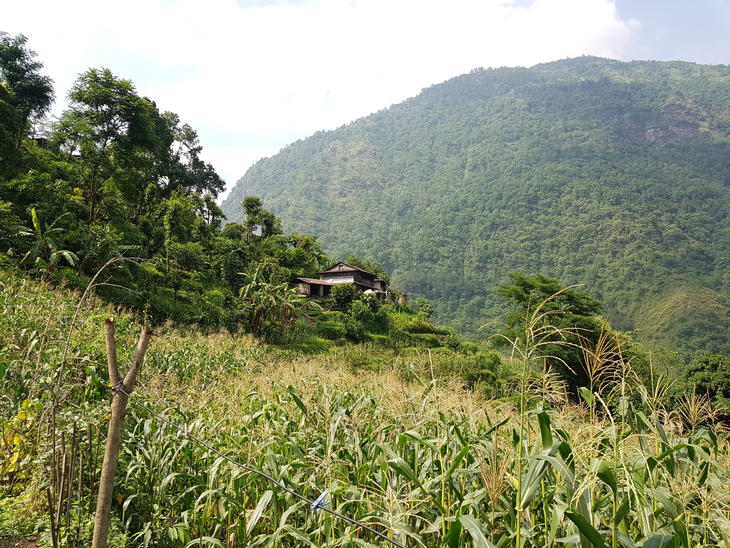
The history of Farmers' Rights - An overview
This article summarizes some of the most important aspects of the history of Farmers' Rights. You can read more about them in the other articles under History of Farmers' Rights.
The origins
The idea of Farmers' Rights came up in the early 1980s as a countermove to the increased demand for plant breeders' rights, as voiced in international negotiations. The purpose was to draw attention to the unremunerated innovations of farmers that were seen as the foundation of all modern plant breeding (more >). Thorough analysis of the documentation shows that the concept was first brought up in international negotiations in the Food and Agriculture Organization (FAO) in 1986. Already in 1987, considerations and practical solutions were suggested that formed a foundation for all further negotiations on Farmers' Rights, and provided substantial input to the framing of our current understanding of the concept (more >). Informal consultations on plant genetic resources, the Keystone Dialogues, also helped frame the issue of Farmers' Rights (more >).
Recognition and negotiations
In 1989, Farmers' Rights were for the first time formally recognized by the FAO Conference, and in 1991 the Conference decided to set up a fund for the realization of these rights (more >). Only a few payments were made to the fund, however, and thus it did not materialize. Then the Convention on Biological Diversity (CBD) was adopted in May 1992, and with it a resolution on the interrelationship between the CBD and the promotion of sustainable agriculture. In this resolution, FAO was urged to that ways and means be explored to develop complementarity and cooperation between the CBD and the work of the FAO on plant genetic resources for food and agriculture. Particularly, FAO was urged to seek solutions to outstanding matters, including the question of Farmers' Rights. Also Agenda 21 voiced this demand (more >). This marked the start of lengthy negotiations which finally led to the International Treaty. In 1996 the Global Plan for the Conservation and Sustainable Utilization of Plant Genetic Resources for Food and Agriculture was adopted by the International Technical Conference on Plant Genetic Resources in Leipzig. It, too, addressed the issue of Farmers' Rights (more >).
With the adoption of the International Treaty on Plant Genetic Resources for Food and Agriculture in 2001, a legally binding international agreement was established for the management of plant genetic resources for food and agriculture, in which states are obliged to protect and promote Farmers' Rights, but are free to choose the measures they deem appropriate. This was the result of long and complex negotiations (more >).
Background for the current implementation
The long history of the negotiations leading to these provisions in the International Treaty provides important background for the selection of measures to realize Farmers' Rights:
- Balancing breeders' rights: The concept emerged from the debate on intellectual property rights to plant genetic resources. Initially, the major concern was how to ensure that such rights would not be detrimental to the customary practices of farmers to save, reuse, share and develop plant varieties. These practices were seen as the basis for their continued contribution to conservation and innovation in genetic resources, and should therefore be protected. Farmers' Rights were viewed as a means towards this end.
- Reward to farmers: The enormous collective contribution of past, present and future farmers to the global genetic pool would have to be recognized in practical terms. The rights holders would not be individuals or communities but entire peoples. Measures such as freer exchange of plant genetic resources, sharing of information and research results, and training were suggested. Benefit sharing was an important aspect of the discussion, but interpretations varied. Some suggested benefit sharing on a bilateral basis, whereas others argued that such a system would not be feasible due to the nature of exchange of agricultural resources over the ages: It would not be possible to detect the countries of origin, and the transaction costs would be too high. Therefore, a multilateral system was suggested. This was to form the rational behind the International Treaty.
- Conservation of plant genetic resources and related knowledge: Balancing breeders' rights was one way to ensure that farmers were not hindered in maintaining their customary practices. However, more direct measures would be required to enable farmers to continue to act as custodians of the plant genetic heritage and as innovators in agriculture. Measures to conserve plant genetic resources and the related knowledge, and to stimulate innovations were therefore seen as essential. These measures were sometimes addressed in the context of rewards and benefit sharing. However, they were also deemed important as an independent component of Farmers' Rights, vital to present and future food security.
- International fund: All parties agreed to establish an international fund for Farmers' Rights which would provide the necessary muscle to reward and support farmers for their continued contributions to the conservation and development of plant genetic resources for food and agriculture.
These stand as the foundations of Farmers' Rights. They represent the fruits of long and complex negotiations, and need to be taken into consideration when implementing the International Treaty at the national as well as the multilateral level.